Love macarons but don’t love the price? Make them at home! This recipe for Vanilla Macarons is easy to follow, plus I’m sharing all of my tips and tricks!
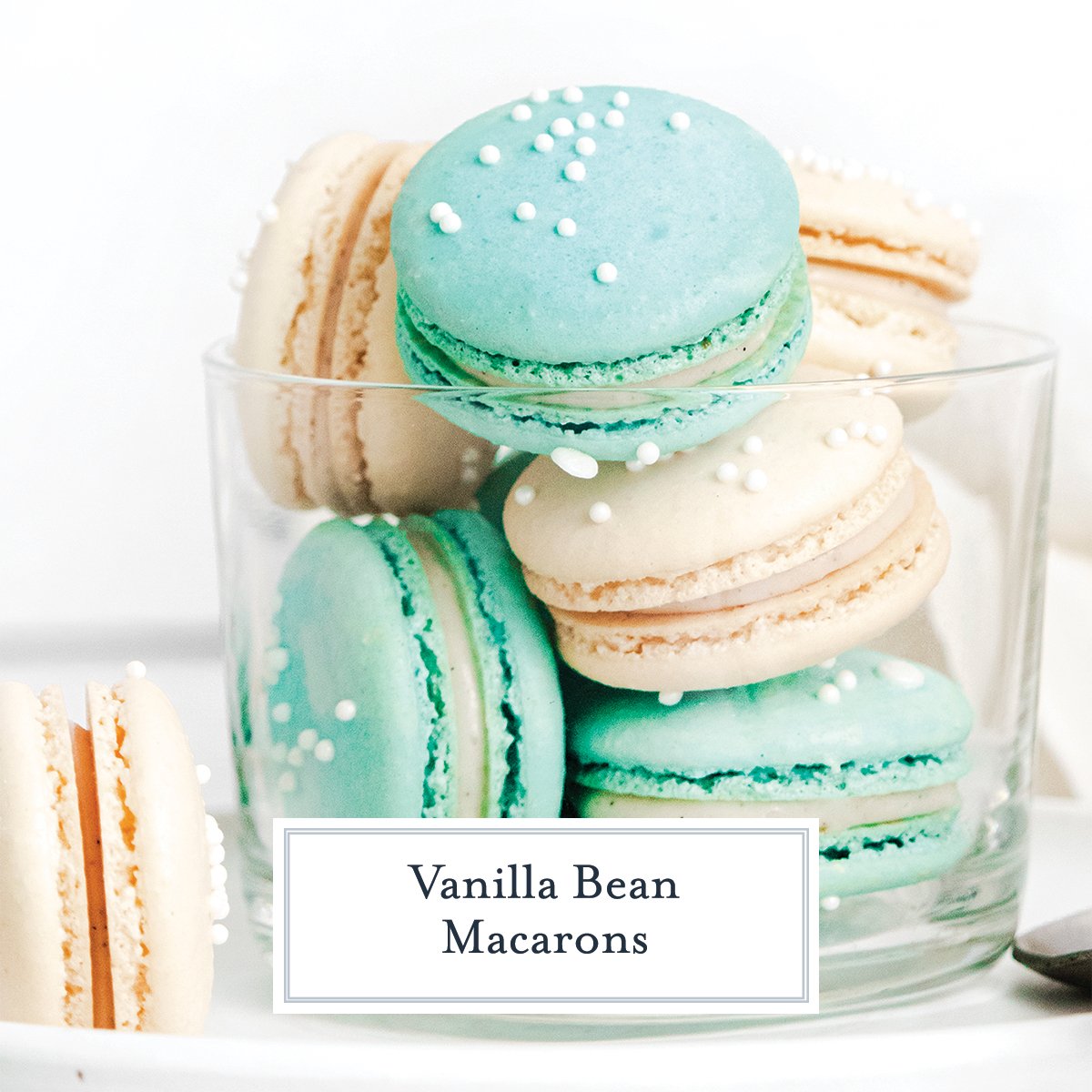
Oh, macarons, how I love you. But at $3-$4 per cookie, I simply cannot afford to eat you like I’d wish. Solution: my own macaron recipe.
And what is the most basic of French macarons? Vanilla, of course. With a base recipe you can go to endless places as far as colors, flavors and also fillings. In fact, I’ll share some of my favorite macaron combinations in this post.
But making macarons is also intimidating… and I am the first to admit that I am not an expert baker. I’ll provide some tips and tricks so that you too, can produce expensive cookies at home.
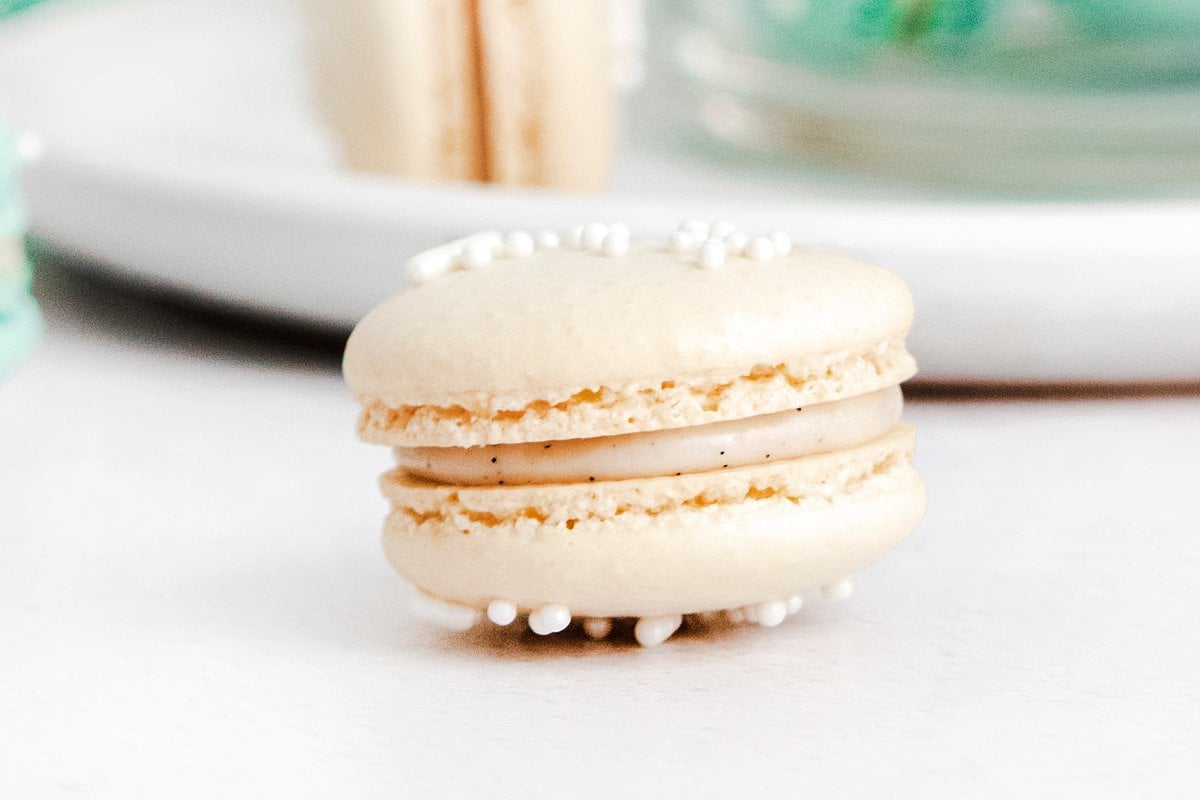
French Macarons
Let’s start with the basics, what is a French macaron? They are little cookie sandwiches that some might declare a pastry. Two shells made with merginue, almond flour and sugar are held together with filling.
Vanilla macarons are naturally gluten free (unless gluten is used in the center filling) and cost more because almond flour is several times for expensive than regular all-purpose flour. However, all-purpose flour can not be substituted or else you will lose the light, airy texture that macarons are famous for.
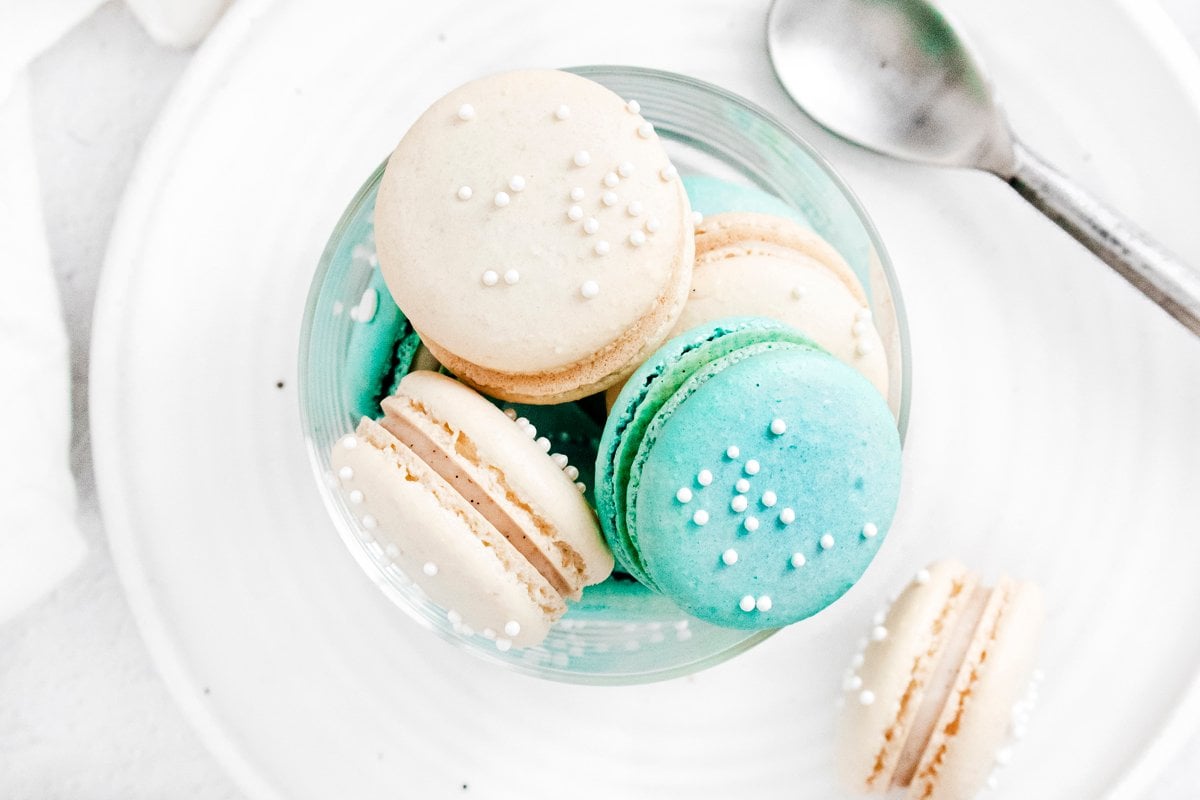
This also uses French meringue, which means that the egg whites and sugar are heated before whisking. This makes for a smoother batter and also prevents you from having to let the eggs come to temperature.
Ideally the shell should be a little crunchy and the interior slightly chewy with a deliciously sweet filling.
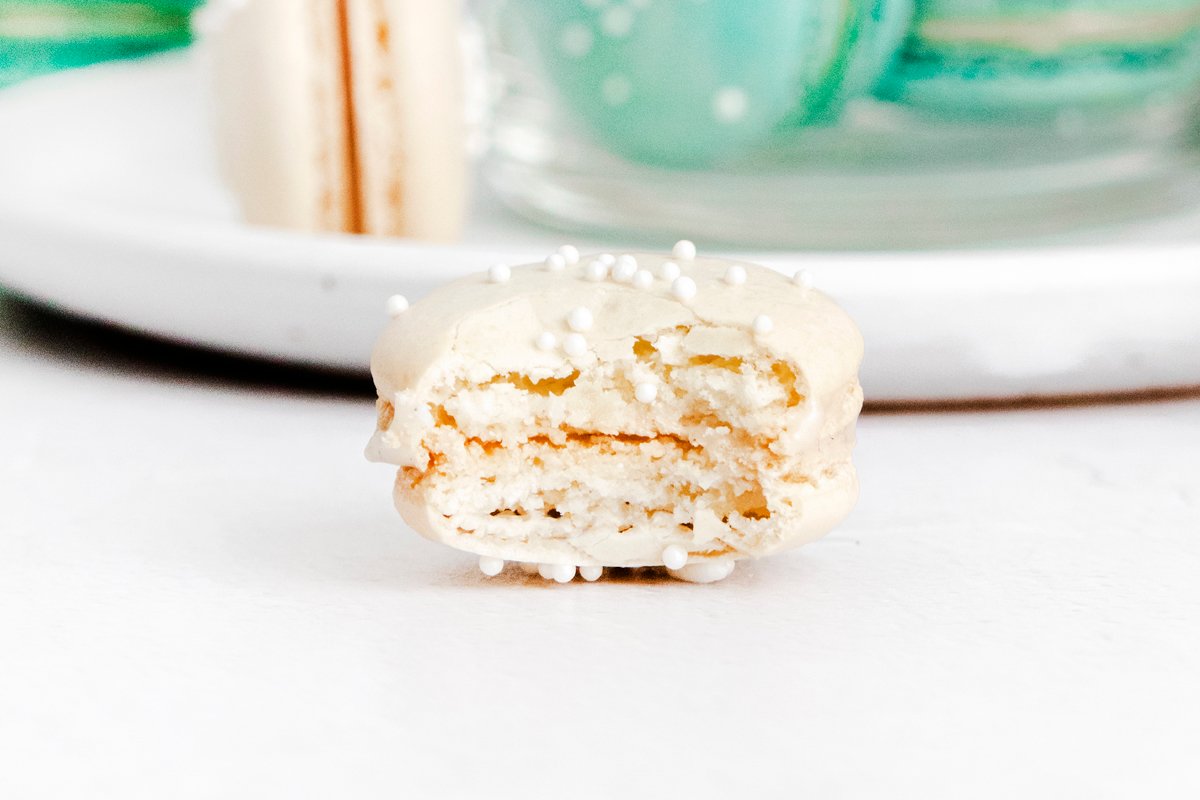
Macaroons vs Macarons
Which evidently leads to the next question: what is the difference between a macaroon and a macaron? Other than the pesky extra “o”, a lot actually.
A macaron is a French cookie sandwich while a macaroon is a sweet ball made from sweetened condensed milk, flaked coconut, almonds and chocolate.
Vanilla Macarons Ingredients
Let’s get down to the nuts and bolts starting with ingredients. The list is not long, it is technique that will build your delicate little cookie sandwich, so don’t just skim the next few paragraphs, I highly encourage you to read them.
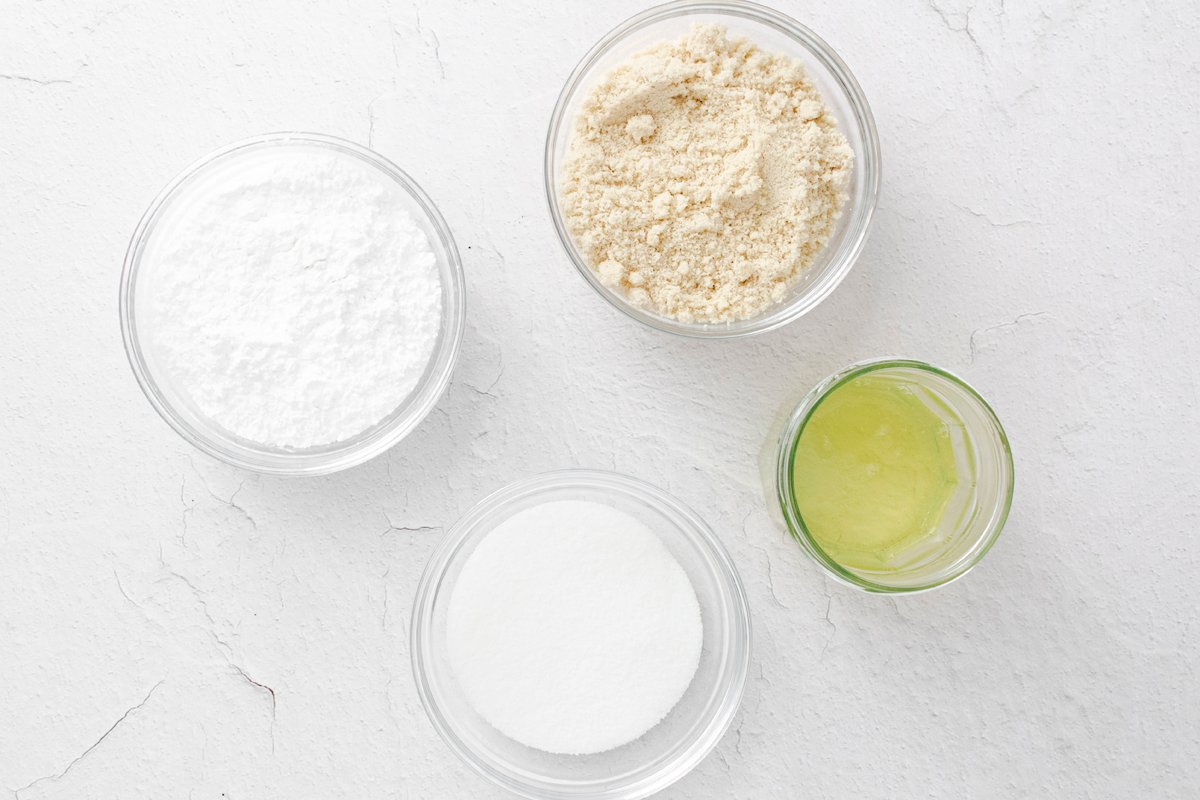
- Large Egg Whites- Make sure you are using large eggs. Most recipes are actually done in volumes and changing the amount slightly can impact your outcomes. You can also use a dried egg product equal to 3 egg whites.
- Sugars– This recipe for macarons calls for both granulated and powdered sugar. The granulated provides structure when melted (caramelized) while the powdered gives it fluff and structure.
- Almond Flour- No, you cannot substitute all-purpose for almond flour (also known as almond meal). This is a key element in making them so light and fluffy. Try to find the finest milled flour possible.
- Vanilla Extract– One of the best ways to customize your macarons is to play with the extract flavors. Almond, raspberry and hazelnut are some of my favorites. It is optional and not pictured in the images.
- Gel Food Coloring– Use must use gel and not liquid- liquid will break apart the structure. Or use none at all.
- Sprinkles– Add sprinkles while piped shells are still tacky. They are baked at such a low and slow temperature that they will not burn. However, if you forget, you can lightly baste the tops of cooled macarons with simple syrup and then sprinkle, but they will not fully dry and will always be a little sticky.
And for the frosting…
- Cream Cheese– This makes a cream cheese frosting for the filling. See my notes below on alternatives.
- Vanilla Beans- This will give you the best flavor and specks, but see the section below on alternatives.
- Powdered Sugar– Also for structure and sweetness.
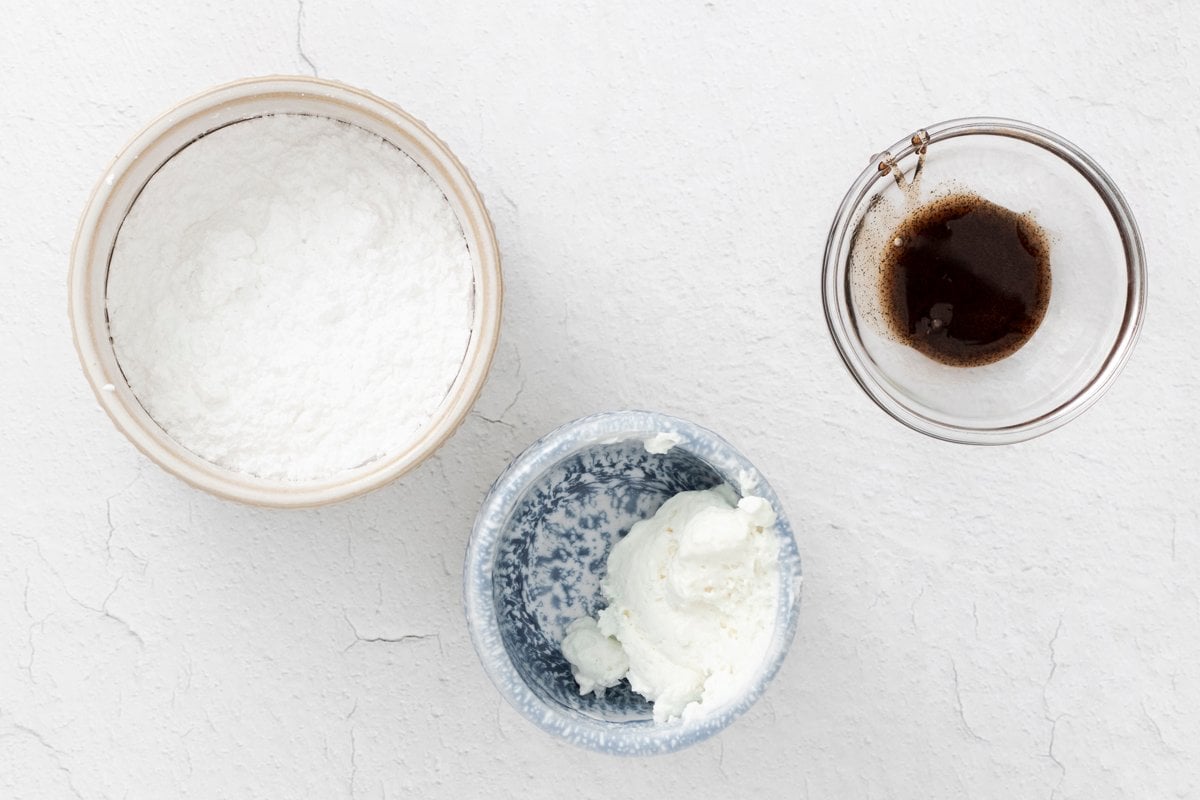
Do I need cream of tartar for macarons? Some recipes call for cream of tartar, but these are typically an American meringue, this is a French meringue and doesn’t require it. It just works as a stabilizer.
I’m not going to repeat the directions below in the body post, it is long enough! The recipes instructions for how to make macarons are quite detailed and printable.
Vanilla Bean Paste
The innards of a vanilla bean pod are called the caviar and sometimes marketed as vanilla bean paste. This is the most concentrated form of vanilla you will be able to get and use and because vanilla bean pods are so hard to grow and harvest, this is also quite expensive. It also provides those lovely little flecks indicative of a vanilla flavored item.
Whole vanilla beans are often available in the same spice jars and as other seasonings at the grocery store, and I prefer them for my vanilla macarons. Using a paring knife, scrape out the beans (caviar) and add it directly to the recipe. You’ll still have another half and what is called a spent pod. Use these to make vanilla ice cream or your own extract. Don’t waste them! They are like gold!
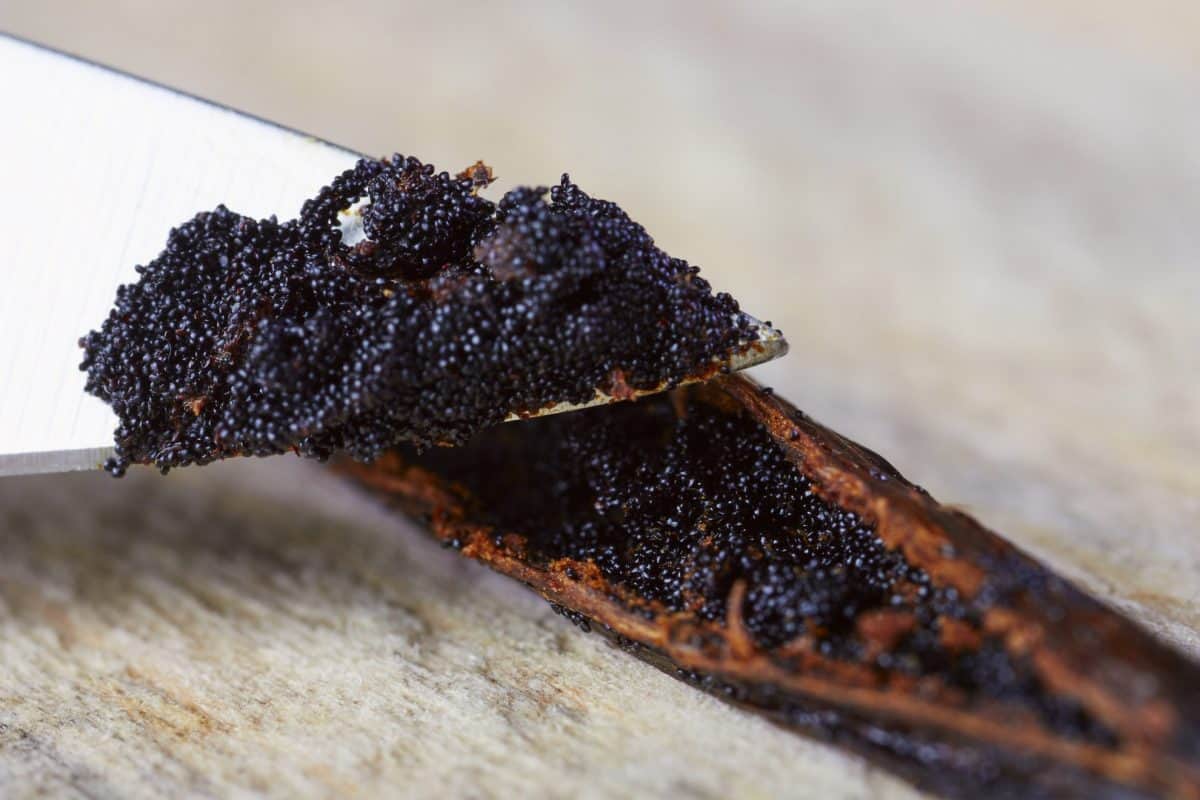
Small jars of vanilla bean paste are also available at specialty grocery stores and online. It is slightly diluted from the purest form, so a middle-of-the-road option. Also slightly less expensive.
Last, but not least, if you want to save money or can’t find whole vanilla beans, feel free to use a good quality vanilla extract. The swap is a 1:1 ratio so 1/4 teaspoon vanilla bean paste will be 1/4 teaspoon extract.
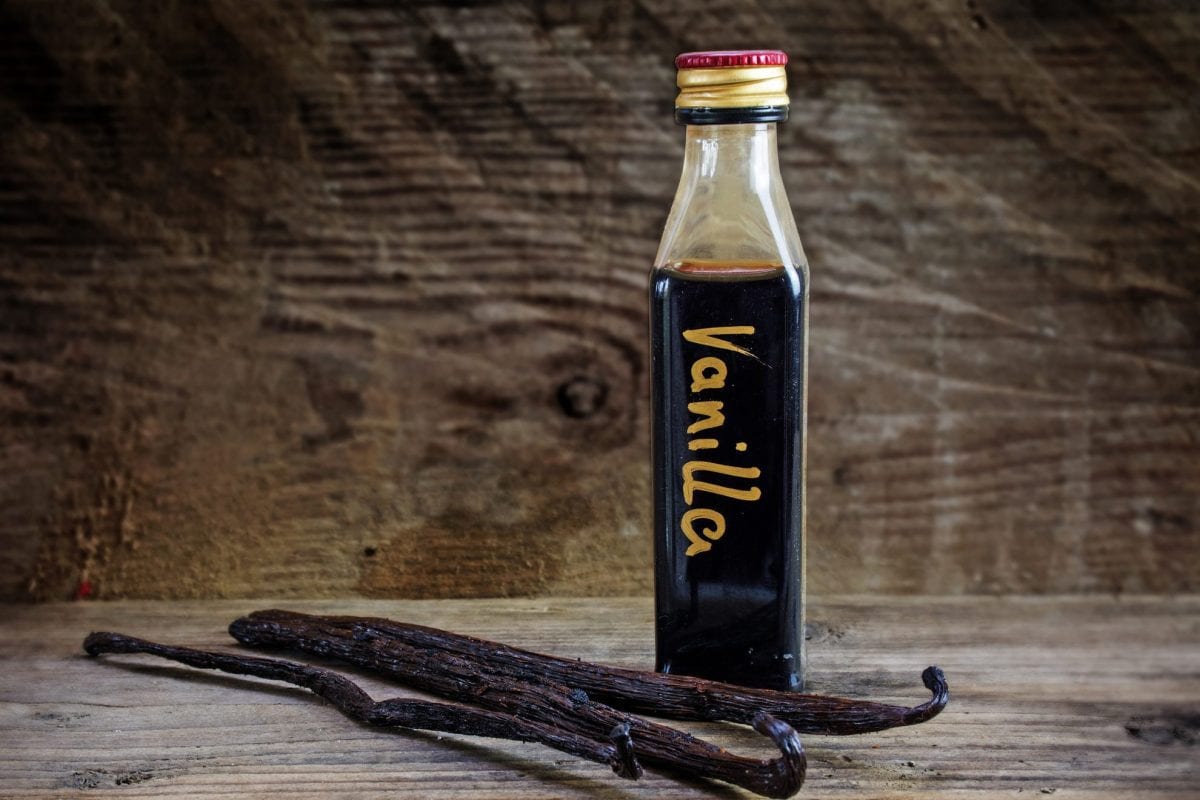
Meringue and the Figure 8
Why do all the macaron recipes ask you make a figure 8? It is an ol school way of knowing the batter has reached the correctly consistency. You don’t need to put into a piping bag or anything, just get a good bit onto the spatula you are folding with and try to “write” an 8 quickly. If you can, you are ready, if not, keep working.
You can also use a different number. I won’t tell.
Vanilla Macarons Filling Ideas
The fillings for macarons are vast. This recipe uses a cream cheese frosting, but feel free to use other types of frostings or even preserves and jams. The only key is to make sure it is thick and dense enough to not leak right out of the sides.
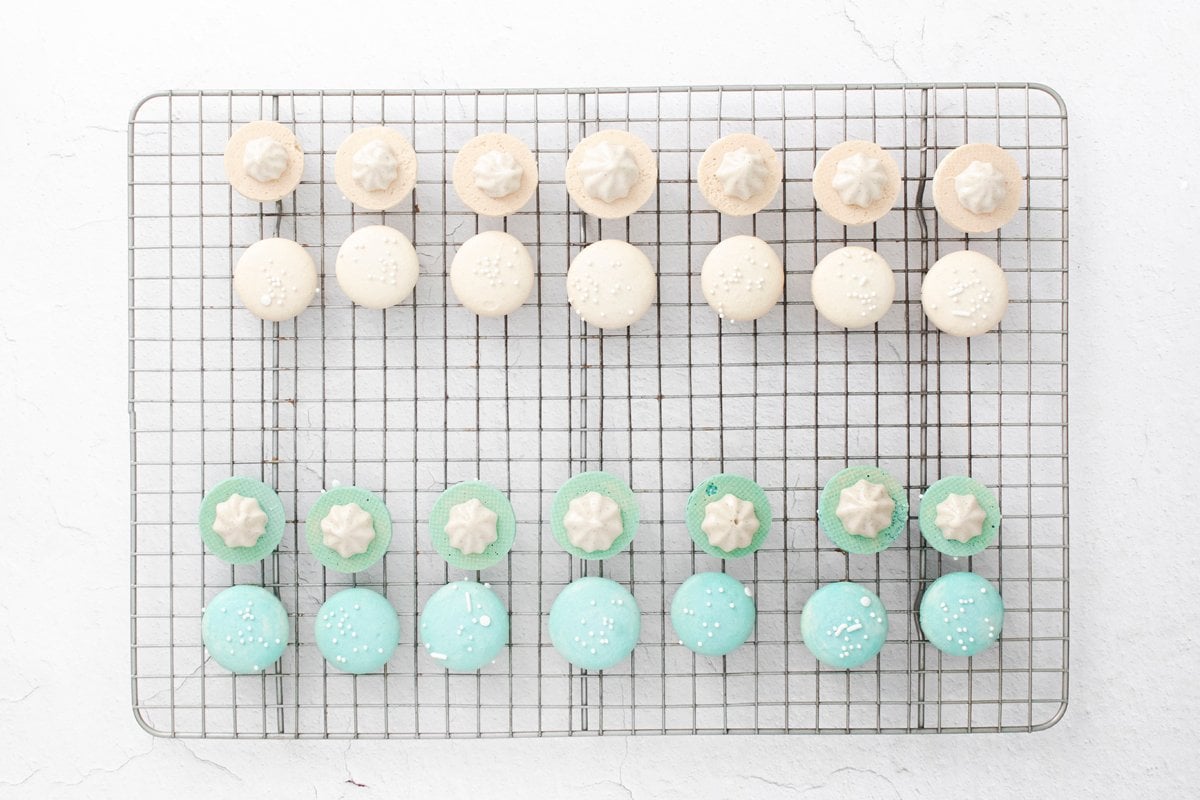
You can even mix two, like a cream cheese and then a small dollop of raspberry preserves. Get creative!
- Chocolate buttercream frosting
- Raspberry jam
- Strawberry jam
- Cherry jam
- Pumpkin cream cheese frosting
- Lemon curd
Troubleshooting Vanilla Macarons
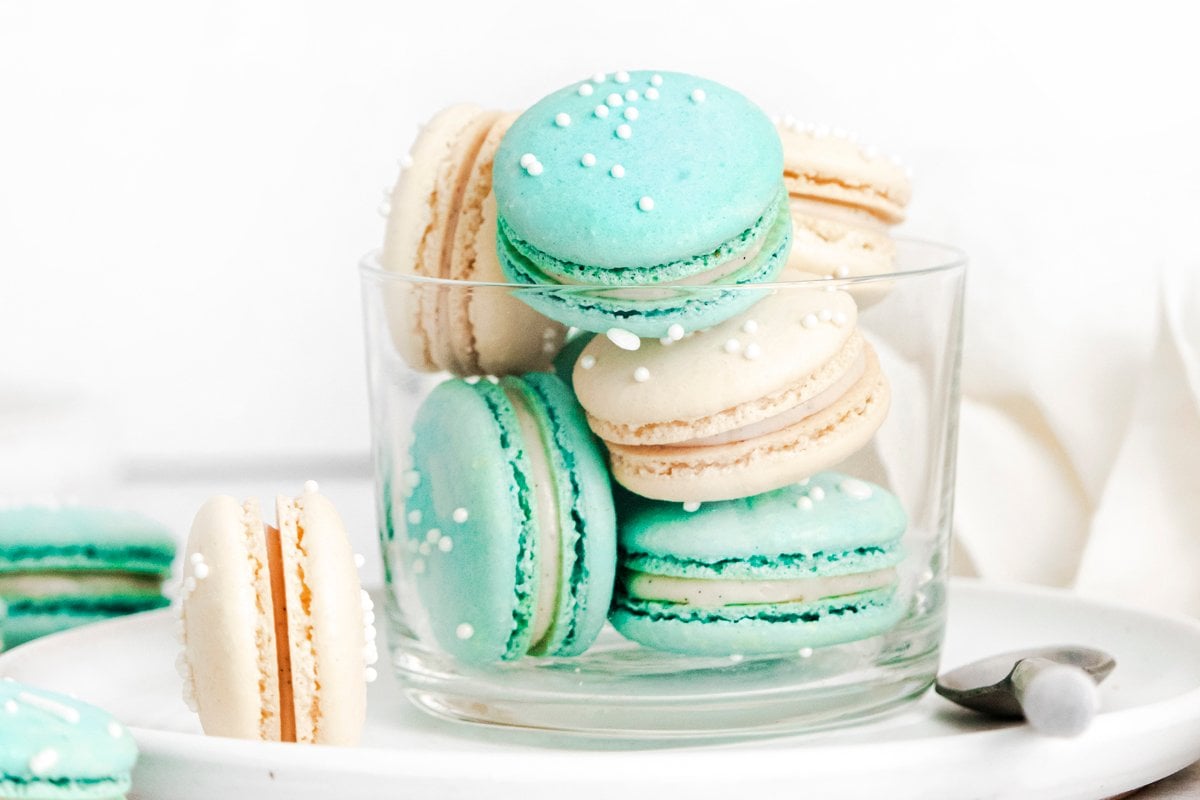
Even though the recipe is so simple, the execution can often get people. Practice makes perfect so just keep at it if you fail the first time. Here are my expert tips to prevent that from happening even just once!
- Humidity is bad for your hair and your macarons. French meringue is more stable than American, but still humidity is NOT your friend. Do not try to bake meringue on a humid day.
- Mix just right. Macarons are like the Goldilocks of cookies. Undermix and they fall, overmix and they fall. Use the figure 8 technique and remember that practice (and low humidity) makes perfect. The good news is that even if they don’t look as pretty, they will undoubtedly still taste good.
- Why didn’t my macarons have feet? Also known as raw edges, this can happen if you don’t let them rest and form a skin. It can also happen from overfolding.
- Why do my vanilla macarons have a pointy top? Not piping at a 90 degree angle (straight down) or too many air bubbles rising while baking. This can also be from underfolding. A stiff meringue will hold its shape and bakes up exactly how you piped it. Macarons need to be stiff, but a little soft.
- Why are my macarons lumpy and bumpy? When I tell you that I can even see this in professional baking photos, I am not kidding. You’ll taste those little texture bumps. This happens if you don’t sift the almond flour and powdered sugar and remove large clumps. The more you sift, the less chance of bumps.
- Why did my macarons crack? Air bubbles in the batter (not tapping) and a change in air temperature too fast can cause cracking. Open the oven door slightly and let the temperature come down slowly before fully cooling.
- Why are my macaron shells flat or hollow? Over Mixing can cause this to happen because there is too much air to push out. Mix just right (using the figure 8 technique) and tap out air bubbles.
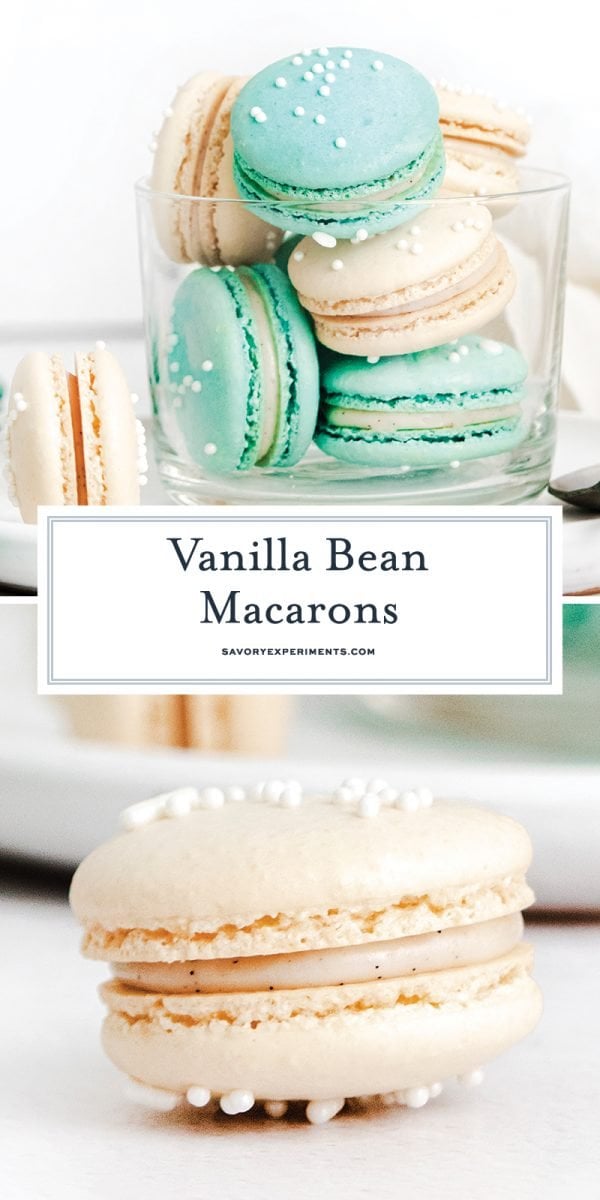
More Delicious Yummy Desserts:
Homemade Sopapillas Recipe
Chocolate Chip Cheesecake Bars
Chocolate Pudding Pie
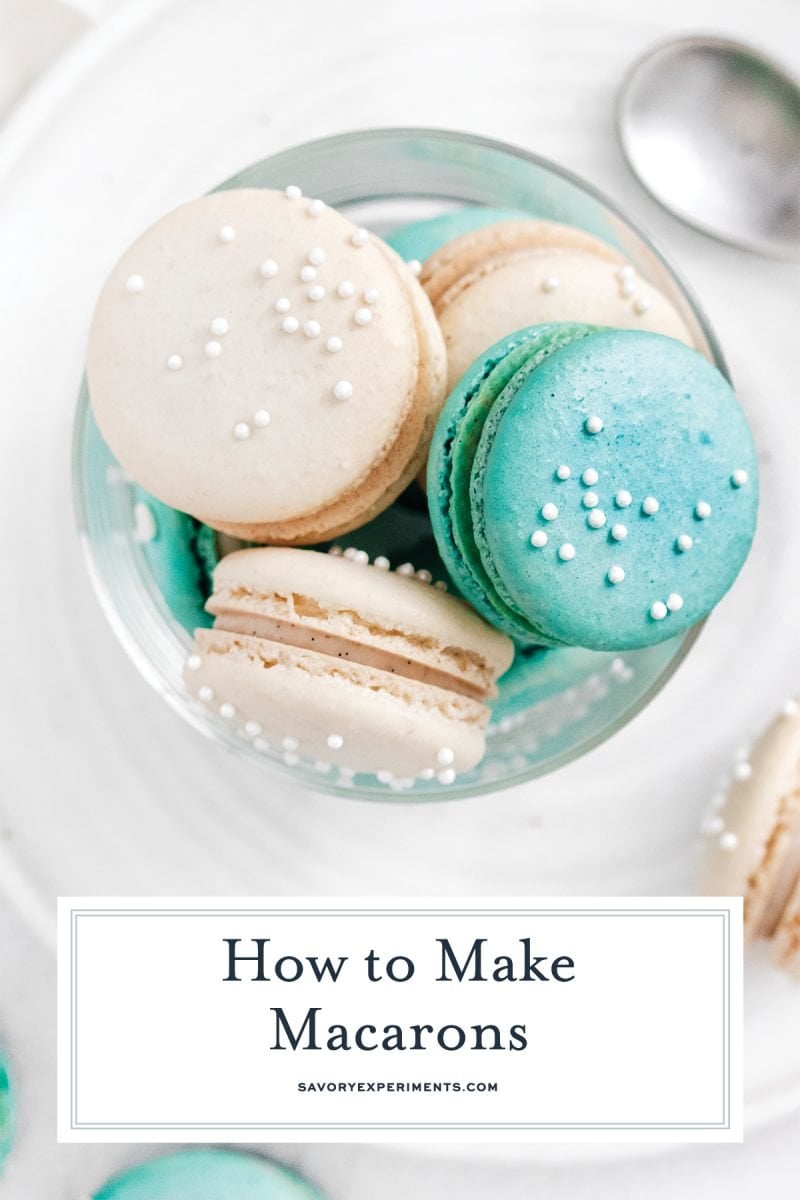
Vanilla Macarons
Equipment
Ingredients
Macaron Shells:
- 3 large egg whites
- ½ cup granulated sugar
- ¾ cup powdered sugar
- 1 cup almond flour
- ½ teaspoon vanilla extract
- Sprinkles and/or Gel Food Coloring , optional
Macaron Filling:
- 2 tablespoons cream cheese
- ½ cup powdered sugar
- ¼ teaspoon vanilla bean paste (or the caviar from half a vanilla bean)*
Instructions
Macaron Shells:
- Measure the egg whites, granulated sugar, powdered sugar, and almond flour into separate small bowls.
- Line two large sheet pans with a silicone mat or parchment paper. Fit a piping bag with a small, round tip (I like a Wilton #10 or 12).
- Heat water in the bottom of a double boiler, in the top pot, add the egg whites and granulated sugar. Whisk them together continuously until the sugar has fully dissolved– about 4-5 minutes.
- Transfer the egg whites and sugar to the bowl of a stand mixer fitted with the whisk attachment. Beat the egg whites on medium-high speed until they form stiff peaks.
- Sift the powdered sugar and almond flour three times through a fine mesh sieve or sifter. If there are any large bits, remove them.
- Fold the powdered sugar and almond flour gently into the egg whites mixture, making sure not to deflate the egg whites. Make sure to scrape all the way to the bottom of the bowl while you fold.
- When half way folded, add vanilla extract.
- (Optional) Once all of the ingredients have been incorporated, remove half of the meringue to a separate bowl and add gel food coloring. To make the teal, I used ¼ teaspoon of Wilton teal gel food coloring.
- Smush the batter against the sides of the bowl and fold it back together until the meringue flows smoothly. When the meringue is ready to pipe, you should be able to draw a figure 8 with your spatula without the stream breaking.
- If the batter falls off in clumps or breaks during your figure 8, continue smushing and folding a few more times before testing again.
- Transfer the meringue to the piping bag fitted with the round tip. Pipe 1” macarons about 2” apart on the prepared baking sheets.
- Immediately when you’ve finished piping a tray, tap it on the counter to release any air bubbles. Repeat 5-6 times, or until it appears that any large air bubbles have popped.
- (Optional) Make sure to decorate the macarons with sprinkles before they dry.
- Allow the macarons to sit at room temperature until they have formed a skin– about 30 minutes. If it’s a humid day, it may take up to one hour. While the macarons rest, preheat your oven to 325°F.
- Bake the macarons one tray at a time for 14 minutes, turning the tray half way for even baking. Turn off the oven and open the door for 5 minutes. Preheat again and repeat with the second tray.
- Allow the macarons to cool fully before removing them from the tray.
Macaron Filling:
- Whisk together the cream cheese, powdered sugar and vanilla beans. Whisk vigorously until no lumps of powdered sugar remain. Transfer the icing to a piping bag and store in the fridge until ready to use.
Assembly and Aging:
- Place the macarons in similar sized pairs on a work space.
- Pipe a small dollop of icing onto the flat size of one of the macarons. Gently press another macaron on top, just until the icing reaches the edges.
- Transfer the macarons to an airtight container and place them in the fridge to age overnight. Bring to room temperature before serving.
- If you've tried this recipe, come back and let us know how it was in the comments or ratings!
Notes
Nutrition
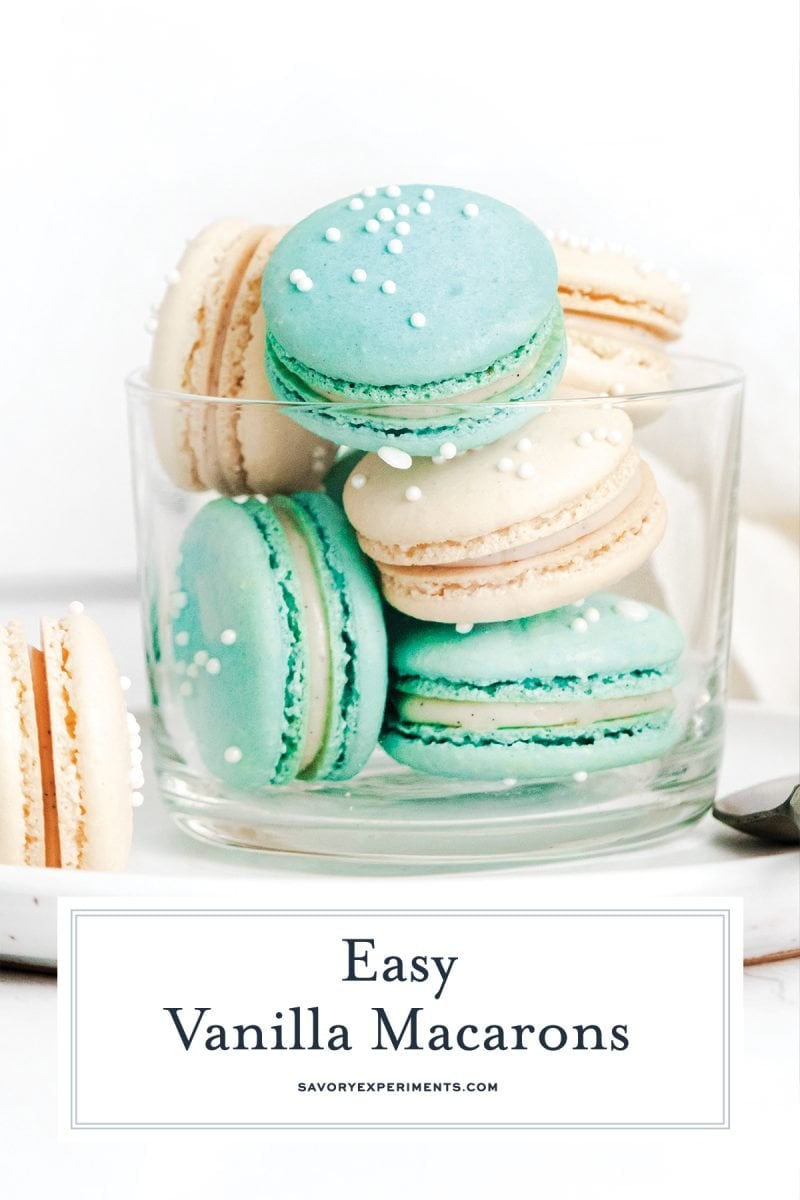
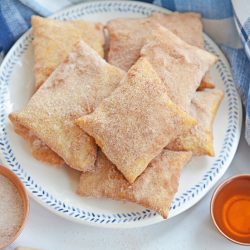
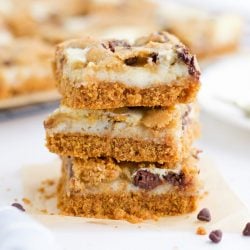
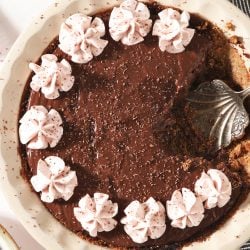
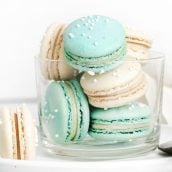
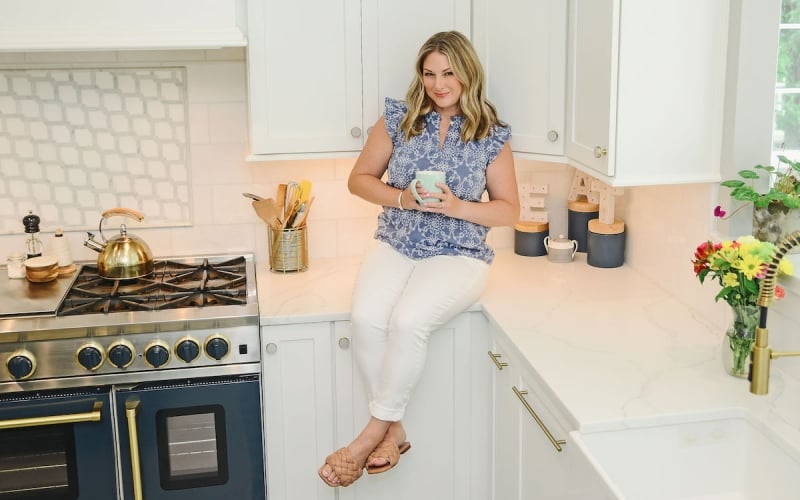
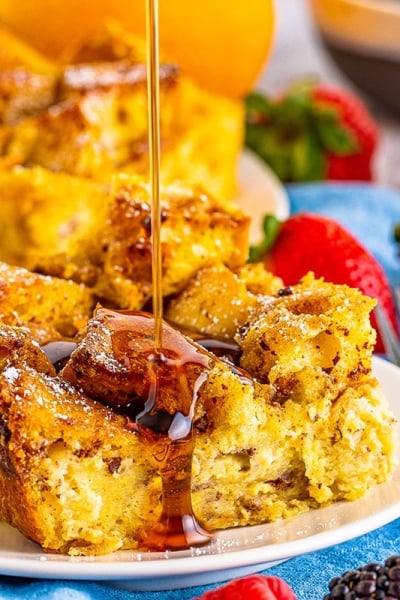
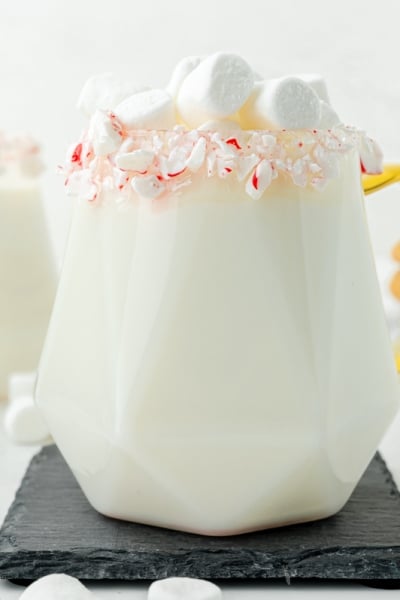
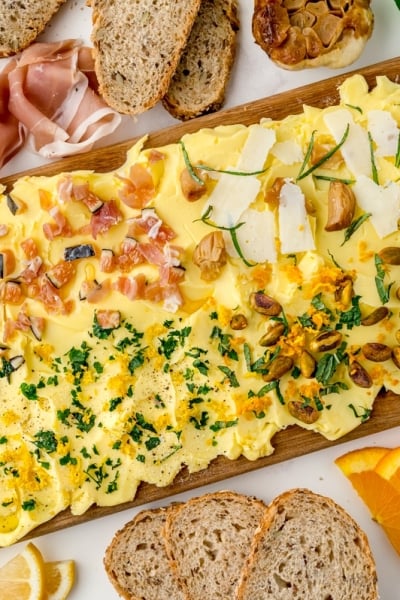
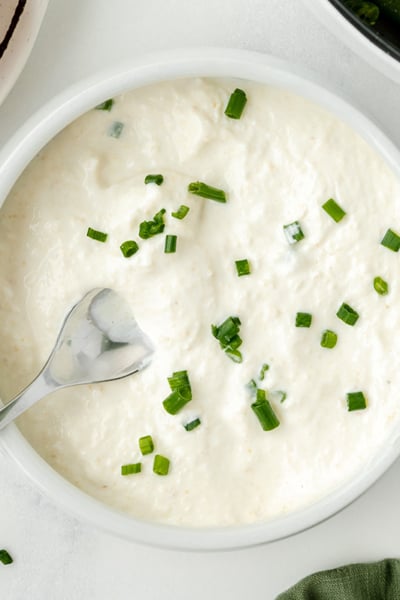













Macarons are so beautiful and delicious. I have always been intimidated to make them, this tutorial makes it look easy. So I guess this is the perfect time to try them out!
I think I got to the point to start making macarons. I was scared enough to give them a try, but I feel confident with your guided recipe. I will let you know once I make them. 🙂
So pretty and a great special dessert!
We love macarons in our house but don’t make them very often – definitely giving this delicious recipe a try!
I always finding making homemade macarons so intimidating! I will have to try your recipe soon. 🙂